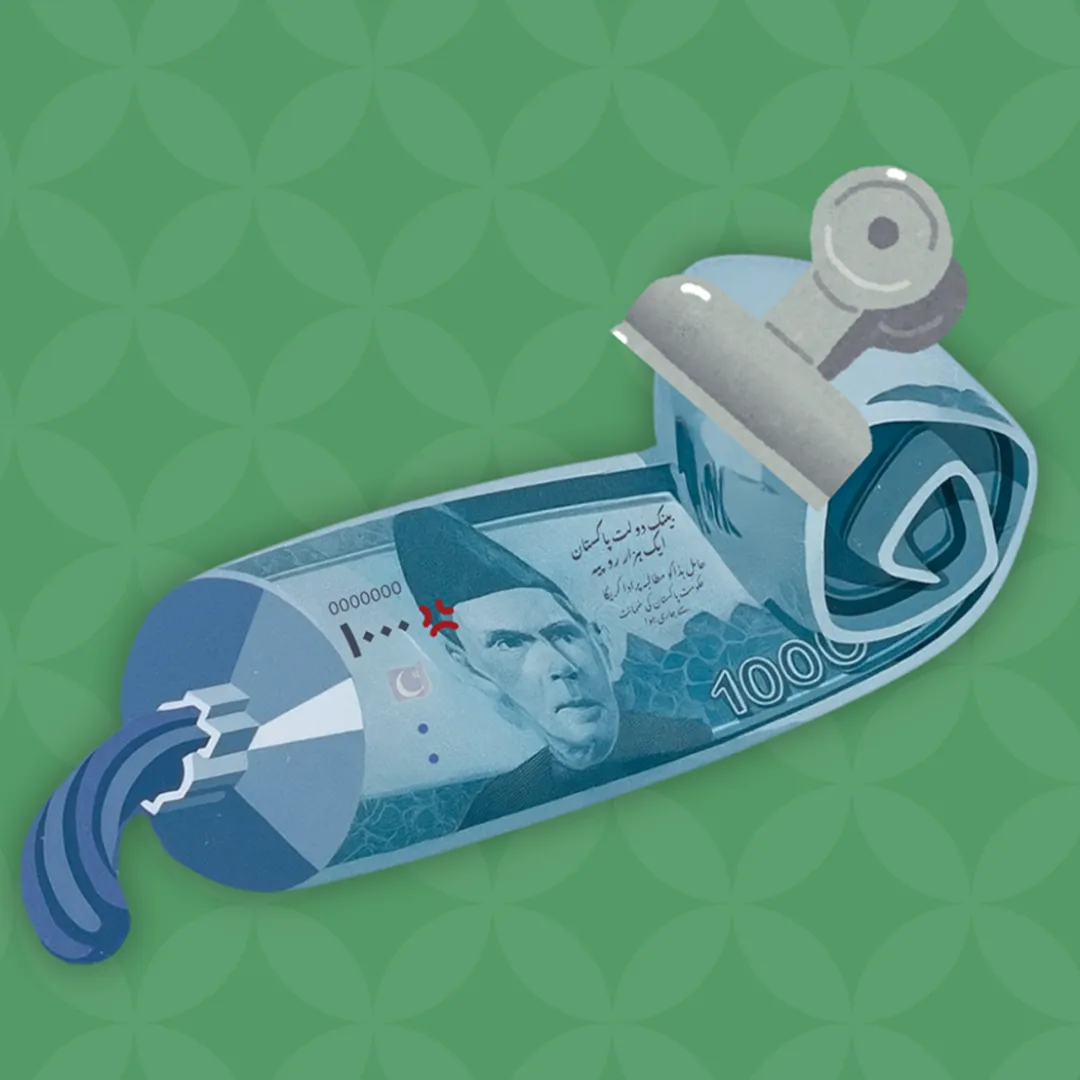Note: The Finance Bill was yet to pass in Parliament at the time of writing and the information contained in the Budget documents was current up to 10th June 2025. Some changes have taken place, such as some tax and duty amounts. However, despite that, this is a picture of the Budget presented in an attempt to demystify it for the people it affects the most.
The Government of Pakistan tabled the Budget for the FY 2025-26 in the National Assembly in the first half of June 2025; on 26th June the National Assembly passed the PKR 17, 573 billion Budget, largely the same as initially presented. As is tradition, almost everyone jumped to the figures for the Armed Forces and a furor rose over the proposed 20% increase for the military sector, when it was initially presented.
However, the Budget is a complicated set of documents and based on even more complicated economic factors. Here then, is a breakdown of the Budget, visually and textually, highlighting the proposed tax hikes, the government’s aims for widening the tax net, repaying its debts and a lot else.
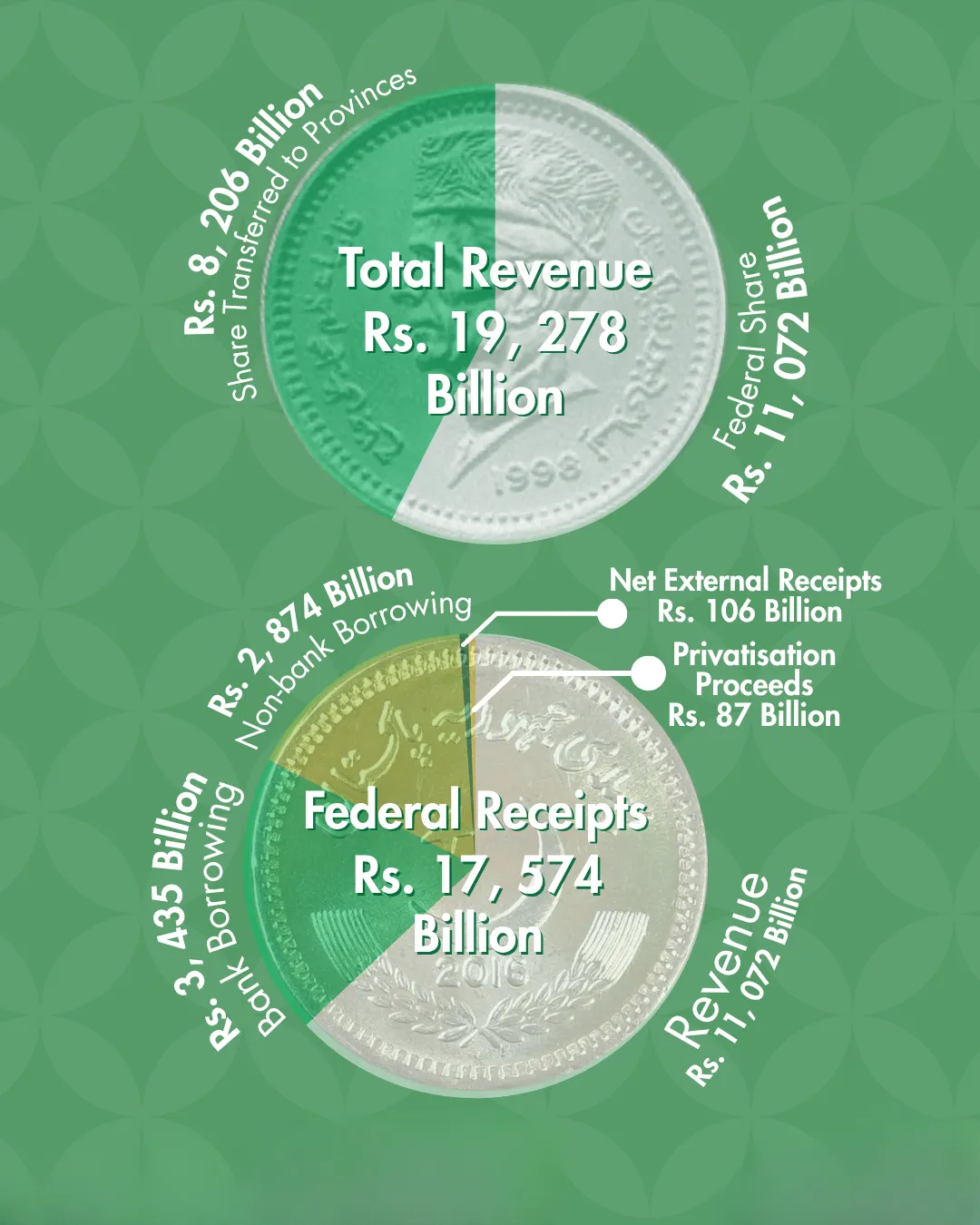
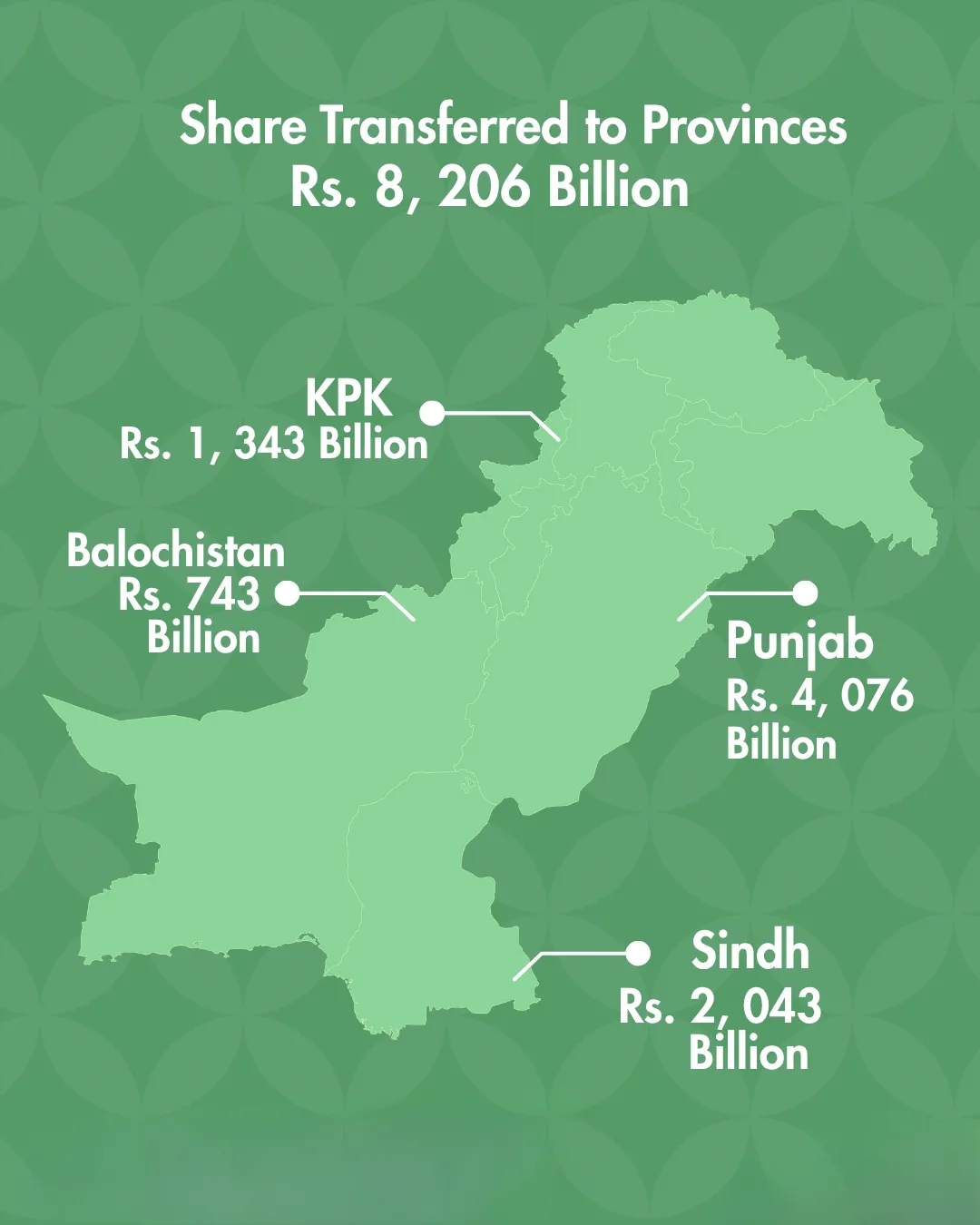
The share transferred to provinces can be further broken down as:
Share transferred to provinces (in PKR billions) = 8,206:
1. Divisible pool of taxes:
a. Income tax = 3,866.5
b. Sales tax (excluding Sales Tax on services) = 2,716.8
c. Customs duties = 892
d. Federal Excise Duty = 503
e. Capital Value Tax = 9.86
2. Straight Transfers:
a. Gas Development Surcharge = 37
b. Royalty on natural gas = 112.7
c. Royalty on crude oil = 56.8
d. Excise duty on natural gas = 10.4
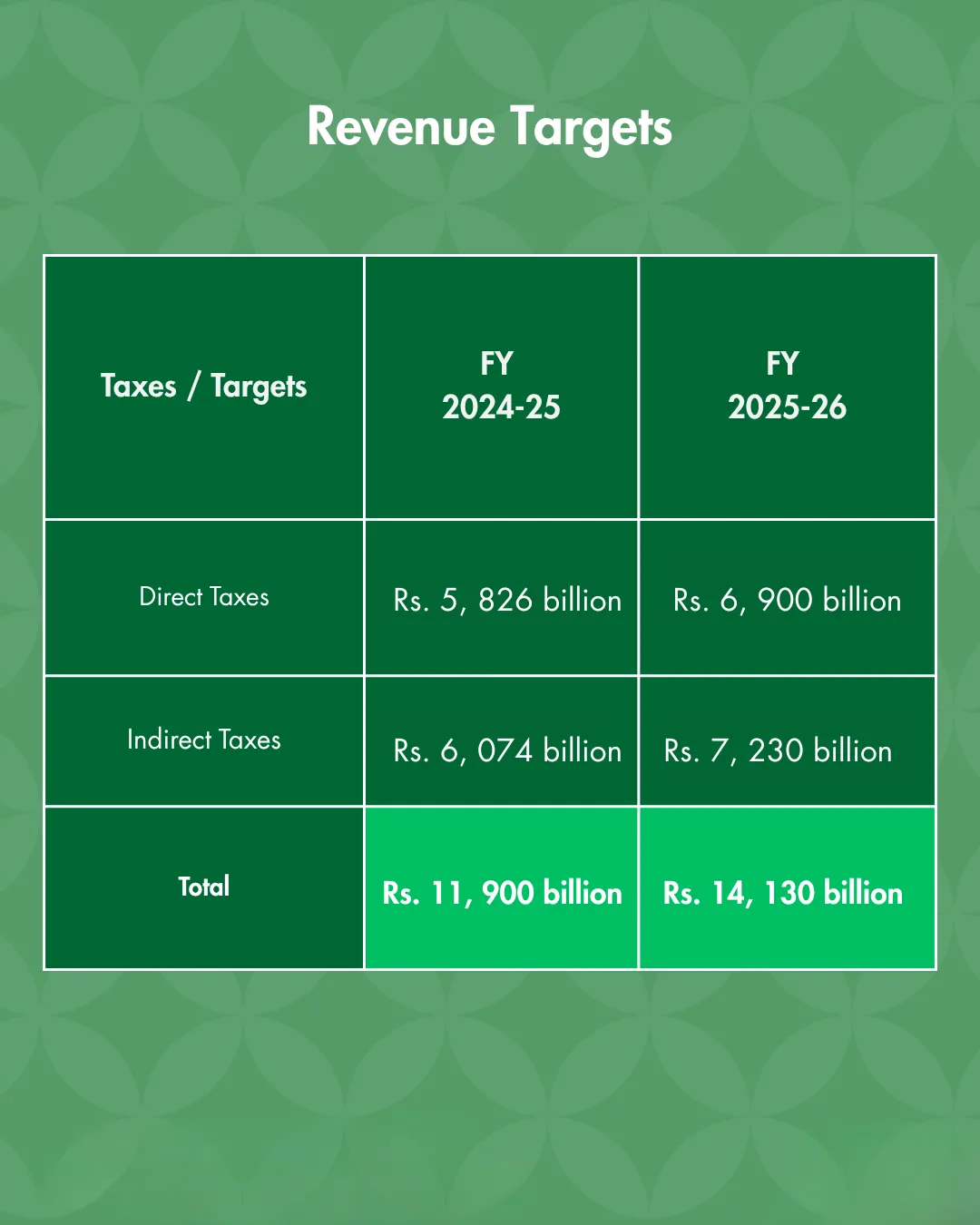
The Government of Pakistan has raised the target for the FBR to collect taxes amounting to Rs. 6900 billion in FY 2025-26, even though the previous financial year’s target could not be met and had to be revised down by Rs. 100 billion.
This leads us to wonder what means the Government has devised to collect the budgeted revenue for FY 2025-26.
In order to enable the Federal Board of Revenue (FBR) to aggressively collect more taxes and duties, the Government is proposing to give its officers sweeping powers. These include powers to arrest, and penalise non-filers by barring them from buying or selling property, blocking their bank accounts and other such measures. (Read more about this and the implications in Haroon Sethi’s piece for Dunya Digital).
The Finance Bill also states that the traditional marketplace is being hurt by the proliferation of online retailers, who have not been paying taxes. Therefore, the Government proposes that logistics and courier companies withhold tax as high as 18% on these goods to transmit to the FBR. These are part of the Government’s efforts to bring the digital economy into the tax net. Furthermore, the Government is also seeking ways to tax digital services being provided by locals to companies abroad, and by foreign companies to local populations.
Another area which is being looked to in order to provide more tax revenue is that of vehicles; the Government has proposed to tax hybrid cars on the same footing as petrol and diesel-powered vehicles, to end accusations of unfairness and discrimination. Furthermore, to discourage the use of fossil fuels, a Carbon Levy has been proposed on high-speed diesel, petrol and furnace oil of Rs. 2.5/liter for FY 2025-26, to be raised to Rs. 5/liter in FY 2026-27. These measures will raise the costs of owning and operating vehicles that use fossil fuels, as the Government claims to be encouraging more climate-friendly transportation choices. Although it focused heavily on climate in the Budget, the Speech and the Bill, initially the tax on imported solar panels was set at 18%, avowedly to encourage the production of local solar panels in their stead. (Note: This has been reduced to 10% after discussions in Parliament).
Another area that the Government is looking at for more tax collection are the new districts of Khyber Pakhtunkhwa and Balochistan, which have been exempt from taxation for the past 7 years. The Government now proposes to introduce taxation in a phased manner, starting with sales tax of 10% for the next 5 years.
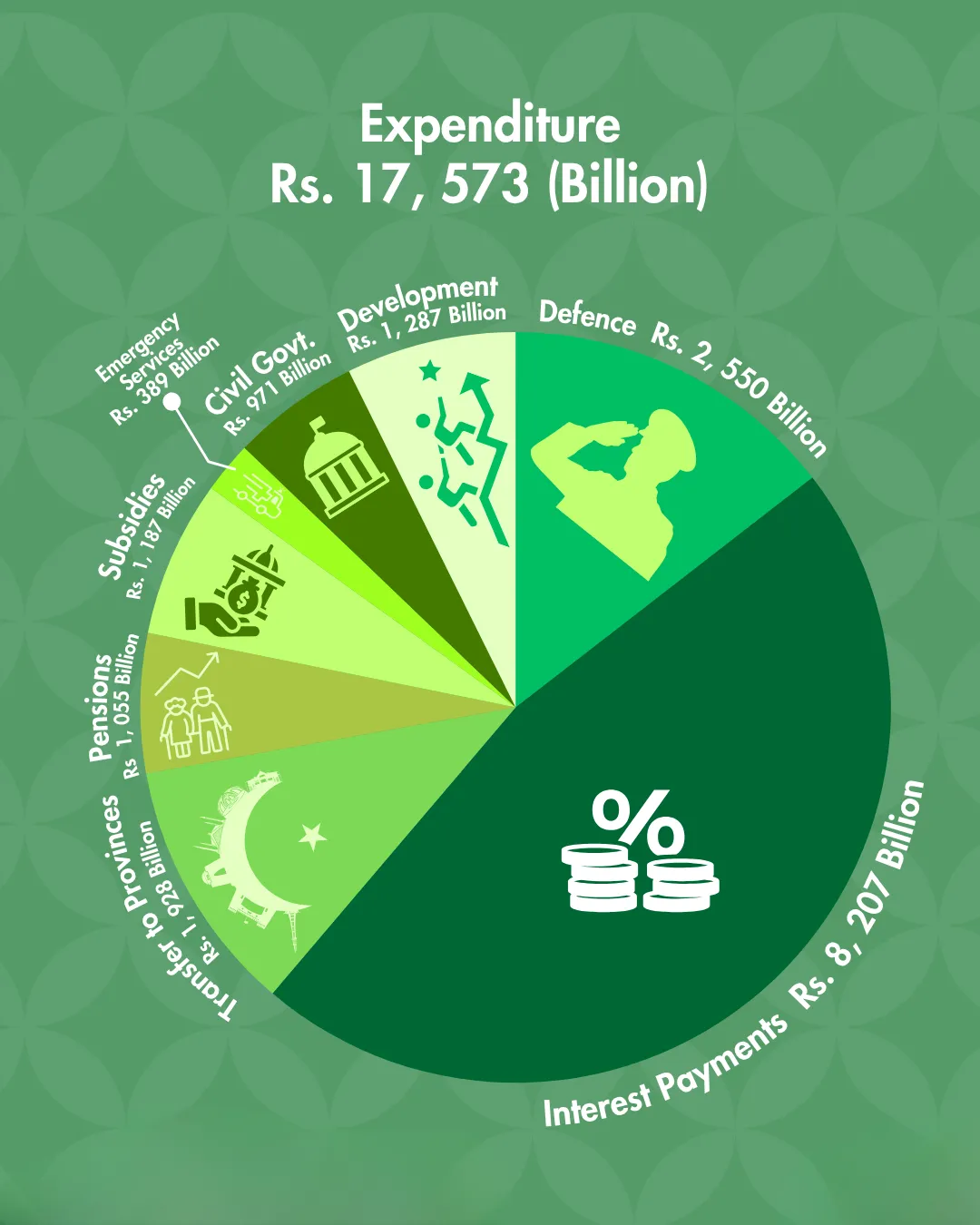
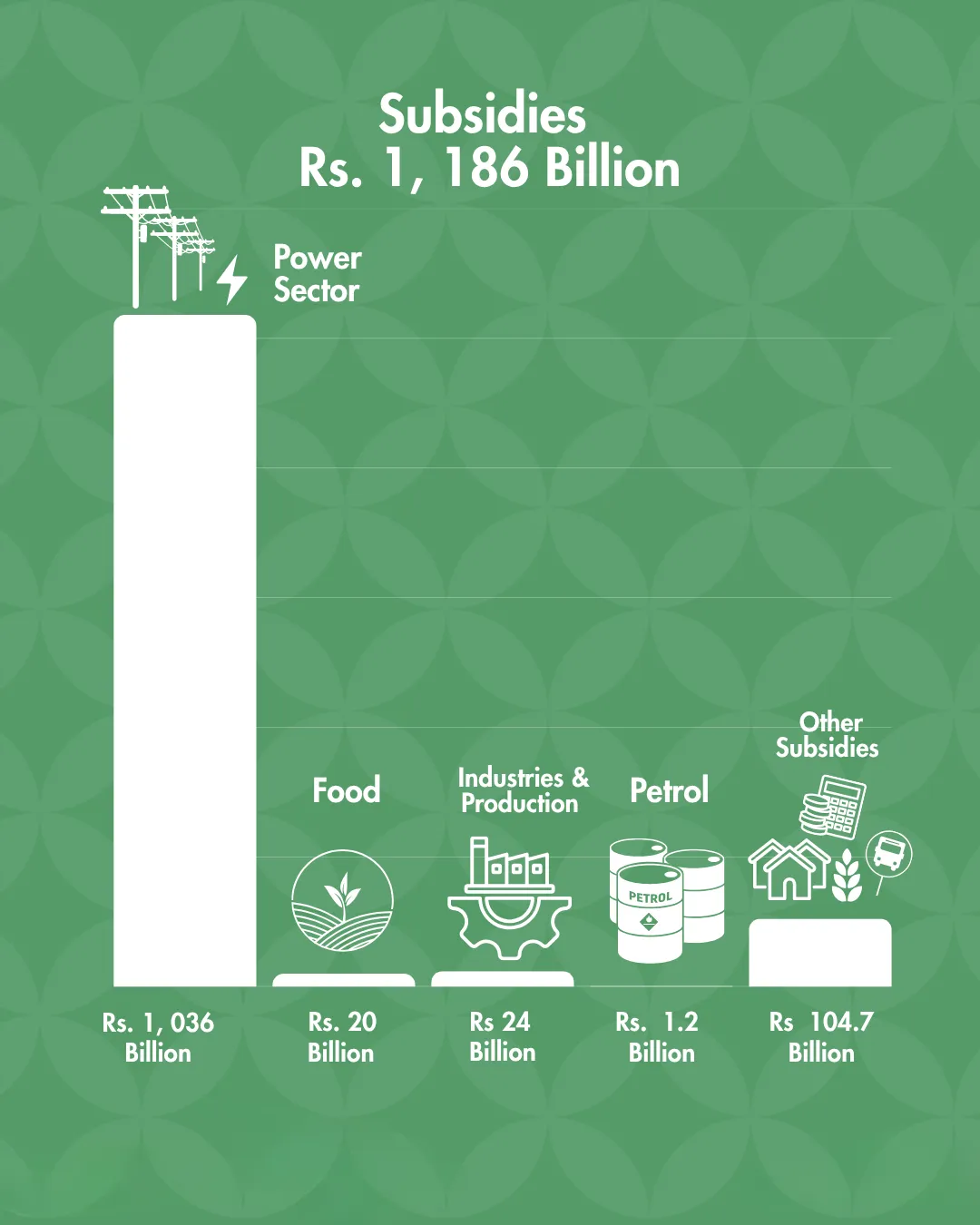
The Government of Pakistan is projected to spend Rs. 2,550 billion on Defence in FY 2025-26. This is a Rs. 300 billion increase from the Rs. 2,190 billion spent last year. The increase, according to the Finance Minister’s Speech, reflects an appreciation for the armed forces’ recent defence of the country against Indian aggression. To fund this budgetary increase, however, expenditure in some other areas will be seeing heavy cuts. The category of “economic affairs” —which includes labour affairs, commercial affairs, fuel and energy, and agriculture—is to see expenditure cuts of up to Rs. 115 billion. Of these, the most significant are the reductions in spending on commercial and labour affairs, which amount to a decrease of Rs. 87 billion compared to FY 2024-45. Additionally, expenditure on fuel is set to decrease from Rs. 20 billion to Rs. 2 billion. Moreover, the development expenditure on agriculture is being reduced by Rs. 132.8 billion; and the development expenditure on fuel and energy by Rs. 25 billion.
Similarly, housing and community amenities, whose budget was revised down to only Rs. 8.6 billion from the original Rs. 27.9 billion in FY 2024-25, is to receive a budget of Rs. 19.2 billion in FY 2025-26, a decrease of Rs. 8.7 billion. Development expenditure is to be slashed further on the following:
1. Health: Rs, 13.08 billion
2. Education: Rs 32 billion
3. Agriculture: Rs. 132.8 billion
FY 2025-26’s Budget shows the Government of Pakistan prioritising debt repayments, defence services and, to some extent, social protection. The majority of debt servicing is to be for domestic debt, with markup amounting to Rs. 7,190 billion, with the markup on foreign debt totalling Rs. 1,000 billion. The Benazir Income Support Programme is to receive a grant of Rs. 714 billion, which is an approximately Rs. 123 billion increase from FY 2024-25.
The Government is budgeting reduced amounts for subsidies for FY 2025-26. Perhaps due to its anticipation of raising revenues through the Carbon Levy, the subsidy for petroleum is to be reduced to Rs. 1.2 billion, which can be compared to the Rs. 18.4 billion spent on this subsidy in FY 2024-25. Subsidies for industries and production have also been reduced from the Rs. 68 billion of FY 2024-25 to Rs. 24 billion for FY 2025-26, since the Government has cut subsidies entirely for fertilisers and Ramzan packages.
Every year the Budget remains a topic of contention; this was an attempt to explain the way the Budget is structured and the important aspects to look at when wanting to understand how it will affect the regular citizen.

